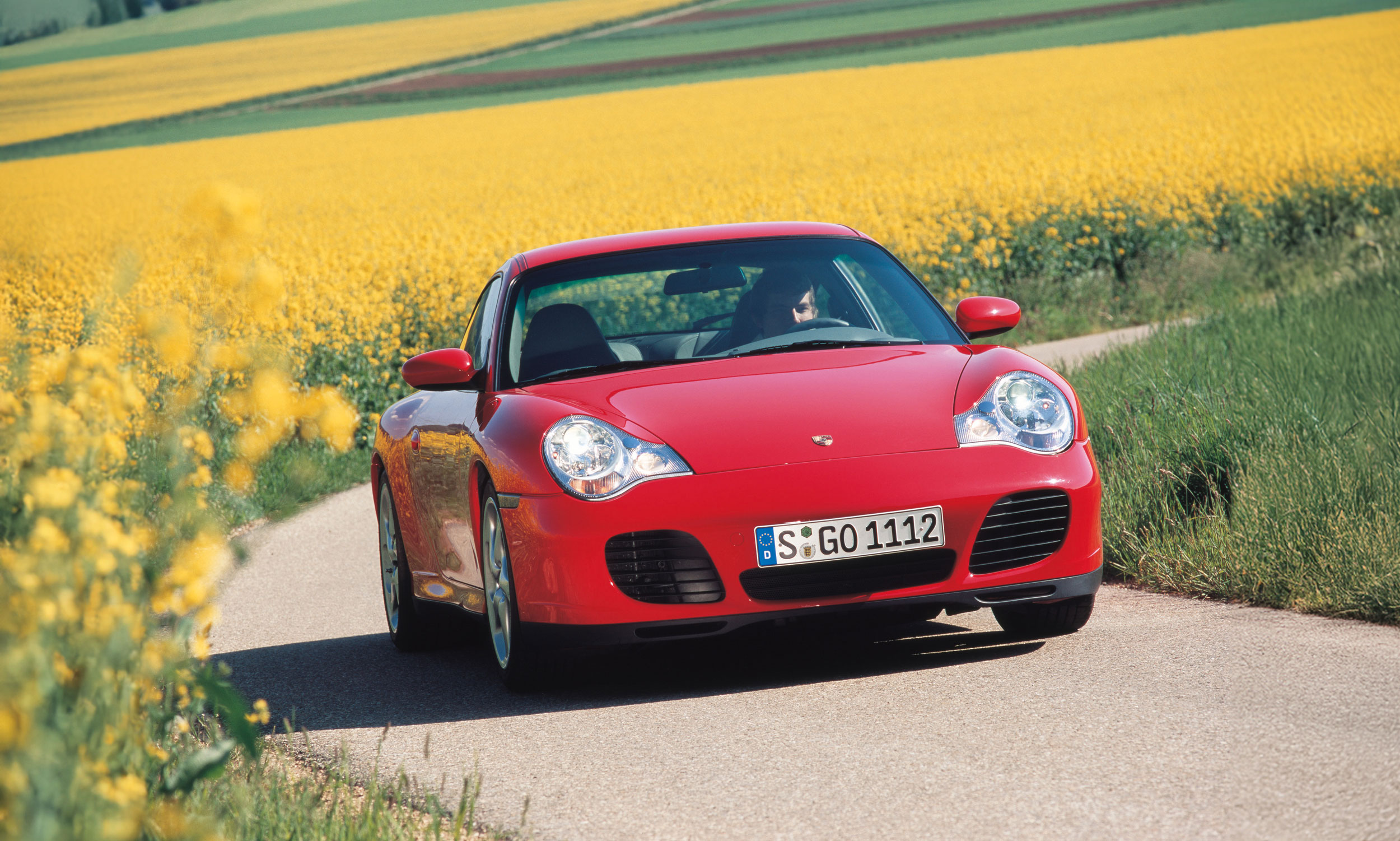When the Porsche 996 launched in 1998, it sent shockwaves through the automotive world. Porsche purists, long accustomed to the iconic air-cooled flat-six, were suddenly faced with a radically different 911. The 996 was the first 911 to be water-cooled, a necessity driven by tightening emissions regulations and the need for increased performance. This wasn’t just an engineering shift; it was a seismic event in the history of Porsche. For many, the 996 was sacrilegious—a departure from everything they held dear about the 911.
But here’s the twist: the 996 wasn’t just different; it was better in almost every measurable way. It brought more power, greater reliability, and a modernised interior that finally dragged the 911 into the 21st century. Yet, despite all its advancements, the 996 faced criticism for its “fried egg” headlights and the perceived dilution of the raw 911 experience. But as time has passed, the automotive community has started to appreciate the 996 for what it truly is: a remarkable sports car that kept the 911 spirit alive while pushing the boundaries of what a sports car could be.
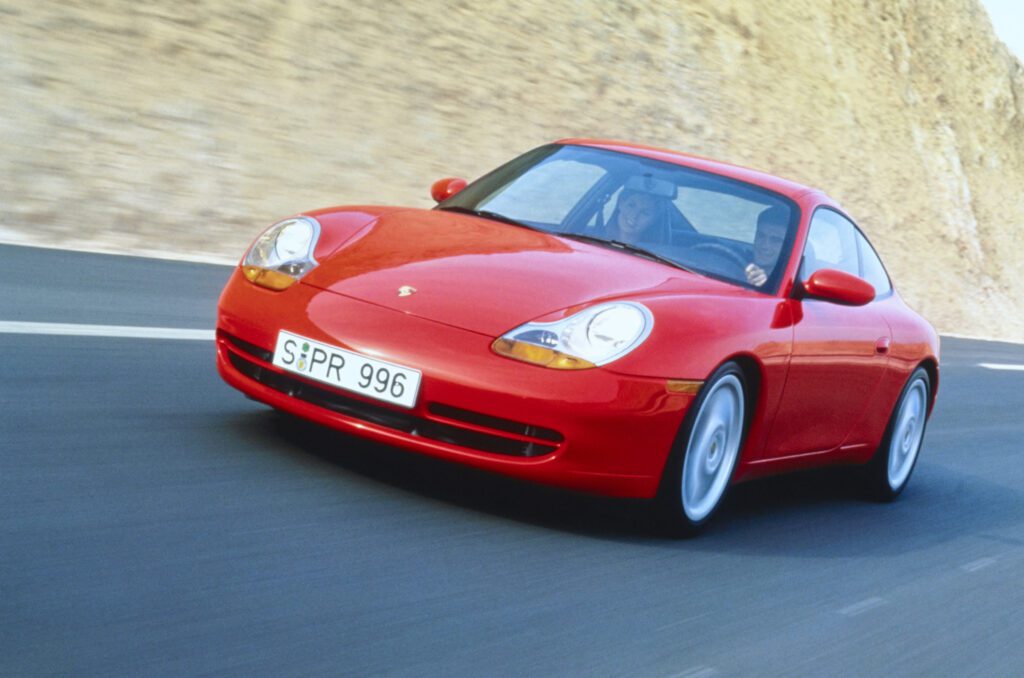
Common Issues
- IMS Bearing Failure: The intermediate shaft bearing in the 996’s engine is prone to failure. While this issue is less common than often suggested, it’s important to verify if any upgrades or replacements have been made.
- Rear Main Seal Leak: Leaking rear main seals are common. They can be managed by waiting until a clutch replacement is needed, as this will save on labour costs for the repair.
- Bore Scoring: Some engines experience bore scoring, which can be detected with a bore scope inspection. Regular checks by a specialist are advised.
- Cooling System Maintenance: Ensure that the radiator and cooling hoses are in good condition. The radiator can get clogged with debris, leading to overheating if not properly maintained.
- Coil Pack Failures: Misfiring issues often arise from failing coil packs. These should be replaced as needed to maintain engine performance.
- Suspension Wear: While the suspension is generally durable, listen for creaking or unusual noises which may indicate worn control arms.
- Gearbox Issues: The Tiptronic gearbox can suffer from rusted cooling pipes over time, but replacement parts are reasonably priced. Fitting them not so much.
- Rust: Rust was once rare but, but now the cars are getting beyond the 25-year mark that are starting to succumb. Check the undercarriage, as well as looking for bubbles under paint, which could indicate poor accident repairs.
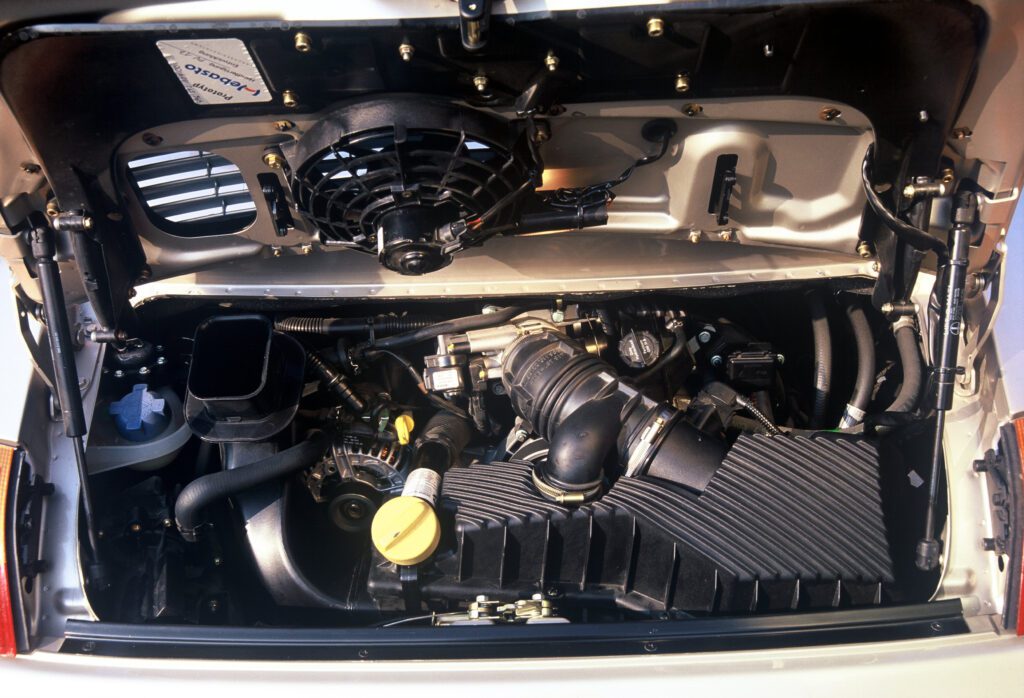
Porsche 996 model guide
Early Models (1998-2001)
Carrera 3.4 (1998-2001): The 996 Carrera 3.4 debuted with a 296 bhp, 3.4-liter flat-six engine. It was available in Coupe and Convertible body styles, offering enhanced performance and comfort compared to its air-cooled predecessors.
Carrera 4 (1999-2001): The Carrera had rear-wheel drive, while this Carrera 4 featured all-wheel drive, providing improved traction and stability. Both versions used the 3.4-litre engine but offered subtly different driving dynamics.
Facelift Models (2002-2004)
Carrera 3.6 (2002-2004): The 2002 facelift brought the Carrera 3.6 with a larger 3.6-litre engine, producing 315bhp. This update included revised headlights, improving the model’s aesthetics and functionality. The Carrera 3.6 also featured Variocam Plus technology, enhancing mid-range torque. Available in Coupe, Convertible, and Targa body styles, it represented a refined version of the early 996.
Carrera 4S (2002-2004): The Carrera 4S was introduced alongside the facelift, combining the Turbo’s body kit, including larger wheels and brakes, with the 3.6-litre engine and all-wheel drive. It became one of the most coveted 996 models due to its sporty looks and enhanced performance.
Targa (2002-2004): The Targa variant featured a unique glass roof panel and a retractable roof mechanism, offering a combination of Coupe rigidity and open-air driving. The facelifted Targa had improved design and functionality.
Turbo (2001-2004): The Turbo model featured a turbocharged 3.6-litre engine producing 420bhp, all-wheel drive, and distinctive styling with a rear wing. It delivered high performance and saw an increase in price due to its enhanced capabilities.
Turbo S (2004): The Turbo S, introduced as a final enhancement to the 996 Turbo range, offered a more powerful 450 bhp engine, improved brakes, and other performance upgrades. It included exclusive features like special wheels and a more aggressive body kit, making it one of the most desirable 996 models.
Special Models
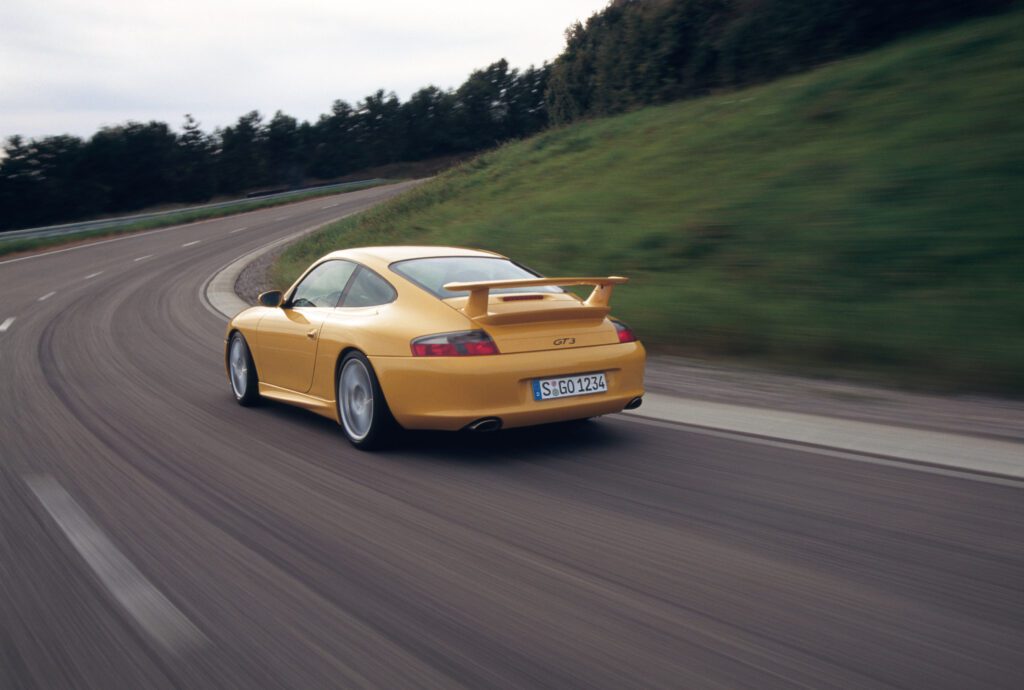
GT3 & GT3 RS (2003-2004): The GT3, with its 3.6-litre naturally aspirated engine producing 360 bhp, was designed for track enthusiasts, featuring a more rigid suspension and lightweight components. The GT3 RS, a more extreme version, focused on weight reduction and track performance.
GT2 (2002-2004): The GT2 was the pinnacle of the 996 performance range, with a turbocharged 3.6-litre engine producing up to 456 bhp. It featured a lightweight chassis and high-performance components, making it a rare and highly sought-after model.
Tuned versions of the 996?
The Porsche 996 has been a popular platform for tuning, with several renowned companies offering upgrades and special editions. RUF is perhaps the most famous, offering the RUF RGT and R Turbo models. These cars featured significant engine and chassis upgrades, with the RGT being a naturally aspirated track-focused machine and the R Turbo offering blistering turbocharged performance.
TechArt is another key player, known for its comprehensive tuning packages that include power upgrades, suspension enhancements, and bespoke interior and exterior modifications. Their GT Street program transformed the 996 Turbo into a 600+ horsepower beast, combining extreme performance with a distinctive visual identity.
Gemballa took the 996 to even greater extremes with models like the GTR 600, offering massive power boosts and dramatic body kits that made the car look as fast as it went. Gemballa was known for pushing the boundaries of what the 996 could achieve, both on the road and the track.
9ff focused on performance above all, creating some of the fastest 996s ever with their GTurbo series, which featured extreme power outputs often exceeding 800 horsepower. Finally, Manthey Racing developed upgrades focused on track performance, with many of their parts being derived from their motorsport experience, particularly for the GT3 models.
Porsche 996 price guide
Early 3.4-Litre Carrera: These still start at around £10,000 for very high-mileage examples, but prices for well-maintained cars can now reach £15,000 or more. Buyers should expect to pay upwards of £12,000 for a clean example.
Facelifted 3.6-Litre Carrera: Prices typically range from £18,000 to £30,000, with the Carrera 4S models often commanding figures closer to the top end of this range. Particularly low-mileage or well-maintained examples can even reach £35,000.
GT3 Models: These have appreciated significantly. Early GT3s now start closer to £65,000, with the best examples pushing past £85,000. The GT3 RS, being even rarer and more sought-after, can indeed exceed £100,000, often significantly so.
Turbo Models: The 996 Turbo is still somewhat undervalued compared to other 911 Turbos, but prices have been creeping up. Expect to pay from £35,000 for higher-mileage examples, with top-condition cars closer to £60,000 or even more.
Turbo S Models: The Turbo S, especially in pristine condition, is highly sought after. Prices for these are generally north of £70,000, and some exceptional examples can push beyond £90,000.
GT2 Models: As expected, these command high prices due to their rarity and performance. Starting around £110,000, the best examples can surpass £160,000, especially for well-documented, low-mileage cars.
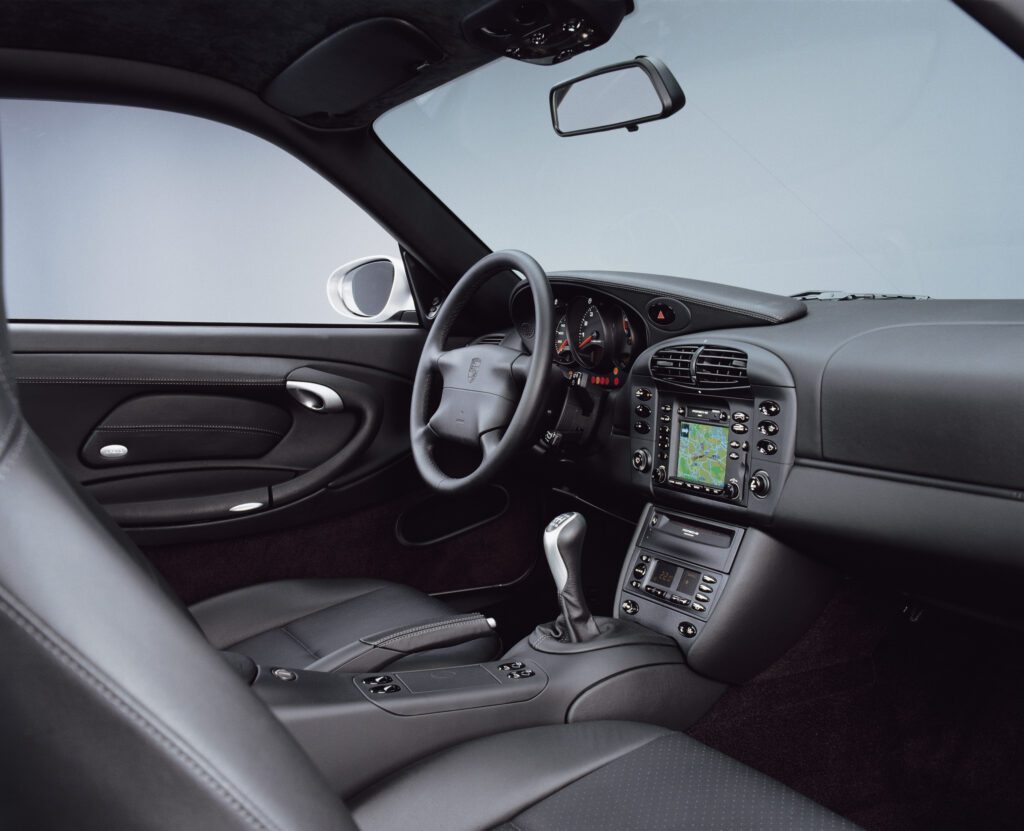
Porsche 996 Carrera specifications
| Production Years | 1998 – 2004 |
| Engine | 3596 cc, 24-valve flat-six (3.6L) |
| Power Output | 315bhp @ 6800rpm |
| Torque | 273lb ft @ 4250rpm |
| Transmission | Six-speed manual |
| 0-62 mph | 4.9 seconds |
| Top Speed | 177 mph |
Dimensions and weight
| Length | 4432 mm |
| Width | 1770 mm |
| Height | 1306 mm |
| Weight | 1317 kg |
Summary
The Porsche 996 represents a pivotal chapter in the 911’s history, blending modern engineering with that classic rear-engined layout and great feedback. Whether you’re interested in a standard Carrera or a more focused GT3 model, understanding these aspects will help you make an informed purchase and enjoy your 996 to the fullest. Our advice would be to arm yourself with lots of knowledge and info, then start hunting the classifieds.
